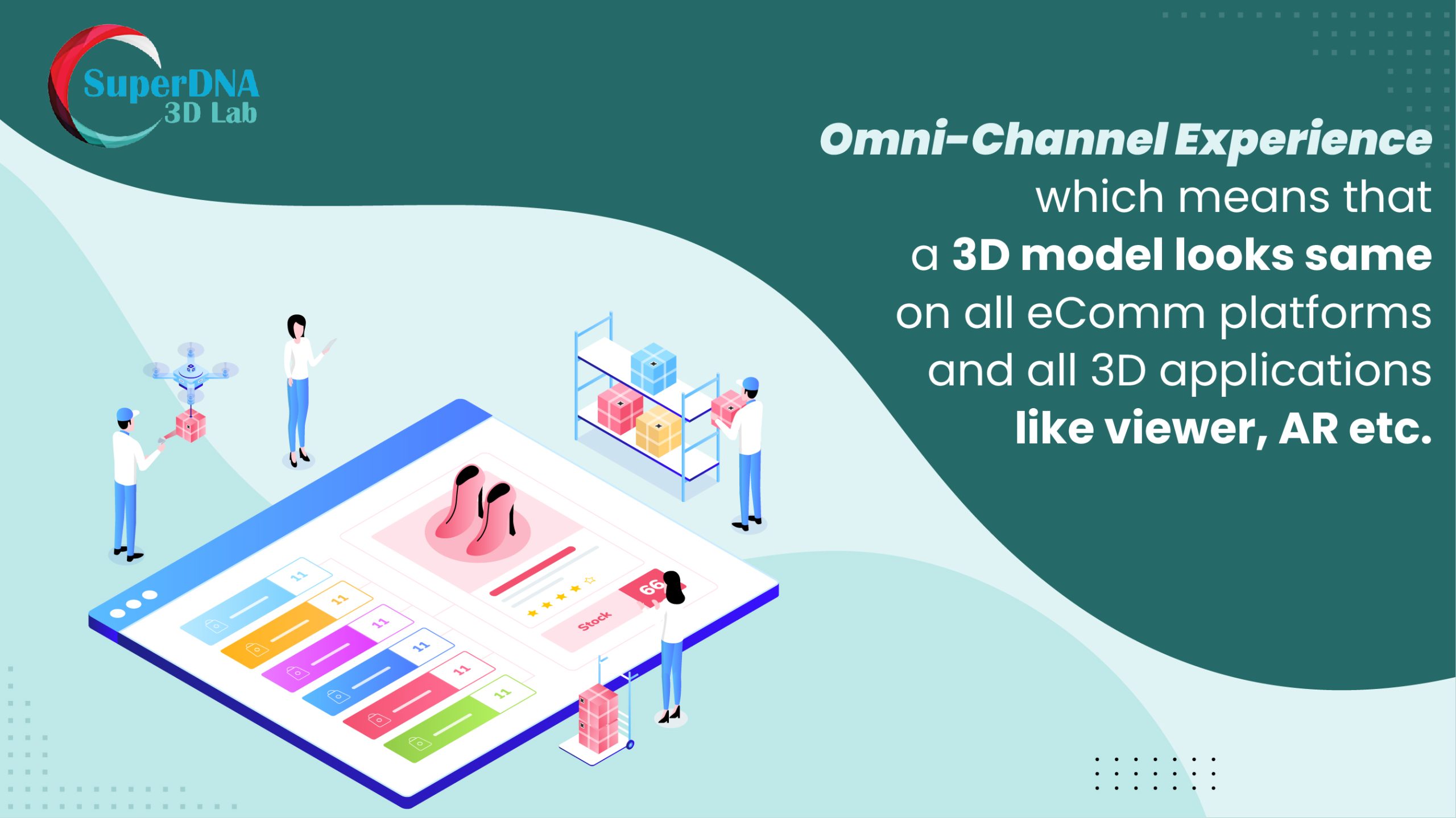
When you hear the phrase, “omnichannel 3D product visualization”, the first thing that pops up in your mind is a uniform, true-to-life, widely compatible, and easily deployable 3D model of your product. Regardless of the hardware that your consumers are using, they are treated to identical models with a characteristic uniformity across their every variation.
This is what omnichannel 3D assets mean. A 3D model that can be optimized for various devices, software platforms, and online marketplaces, without having to compromise on its quality, features, components, proportions, textures, and overall character is what you need.
E-Commerce has become very much dependent on 3D product visualization because of this characteristic which is absent in contemporary product photography. The former preserves the dimensions and essence of your products while the latter through the use of filters, lighting effects, and additional compositing mandatory to make it comply with imagery guidelines of third-party platforms such as Amazon, eBay, or other online marketplaces alters them drastically.
You can customize the background, lighting scheme, textures, colors, additional props, and various other aspects of a 3D object right in the viewport. The resultant imagery is compliant with the guidelines of the submission platforms but doesn’t hinder the model in any way. The same components and features of the 3D model are preserved in the universal file formats of today allowing for multi-channel deployment seamlessly and without losing any critical information. Now, let’s discuss how you can provide your customers with a grand omnichannel experience using uniform and high-quality 3D assets that remain identical across the board
- AR-Enabled Apps
Leading brands such as IKEA have worked on 3D omni-channels extensively. Their 3D assets are uniform, scalable, widely compatible, and have numerous variations. Their customers can project the digital versions of their products onto their real environment using their smartphone cameras. AR apps communicate with your prospects through the use of ultra clear and high-definition 3D models that can be rendered in real-time onto their real environment and adapt to the scene all the while retaining their true form factor.
- 3D Models On Social Media
3D assets can be converted into social media filters and models compatible with Instagram, Snapchat, and Facebook. By posting just one 3D model on any of your social media profiles you can start a long conversation that generates enough curiosity and sales numbers for your brand. It creates awareness and also initiates content sharing through various messaging applications. You can also post the link to your 3D product animation video on YouTube on your Facebook post to create more buzz about your product and target the untapped segment of your market easily.
- Product Configurators On Amazon
Your digital product is going to go on your Amazon 3D configurator panel where a major chunk of your customers can view and personalize your product offerings using a product configurator. Each of your renders is already created keeping in mind the strict imagery guidelines of the marketplace. The result? Your 3D models appear identical to the product and also the AR model and the social media filter that you created. Because the original assets retain all their characteristics from the point of conception, you can ensure that your 3D configurator shows interactive content that is not just true to life but identical to the content displayed across all other channels.
- Stand-Alone 3D Meshes
The same uniformity, aesthetics, design language, textures, and component standards can be upheld when creating stand-alone 3D meshes which are also quite popular. They do not need any proprietary application. They don’t need any special drivers or plugins. All they need is a QR scanner. Yes, your customers just have to point their smartphones at the QR code and download your 3D model onto their devices to view it from every angle. They can project them onto their real environment or superimpose them on their already existing images.
- AR-Enabled Official Website
3D enhances the user experience tremendously and you can do away with the added weight of high-definition 2D images that would otherwise slow down your website significantly. The same 3D elements can be added to your official website smoothly and seamlessly without affecting its speed or performance in any way. Remember, lightweight yet high-quality 3D models reduce your page load times and improve your SEO rankings. What you get is a solid marketing function revolving around uniform 3D assets that are identical and equally impactful across numerous channels and platforms.
Final Thoughts
It is quite clear that following specific guidelines for image submission on every online marketplace or platform makes your marketing function cumbersome and a struggle to carry out. It takes up a lot of your time and resources and you tend to lose out on critical sales opportunities as well. However, things change for the better when you have a uniform and life-like 3D models that can be deployed and utilized without any tweaks to suit practically every channel within your marketing function, regardless of their imagery guidelines. They require minimal optimizations and retain a rather larger chunk of their originality and character with ease. Let’s discover more about highly compatible and easy-to-deploy 3D Assets with SuperDNA 3D Lab.